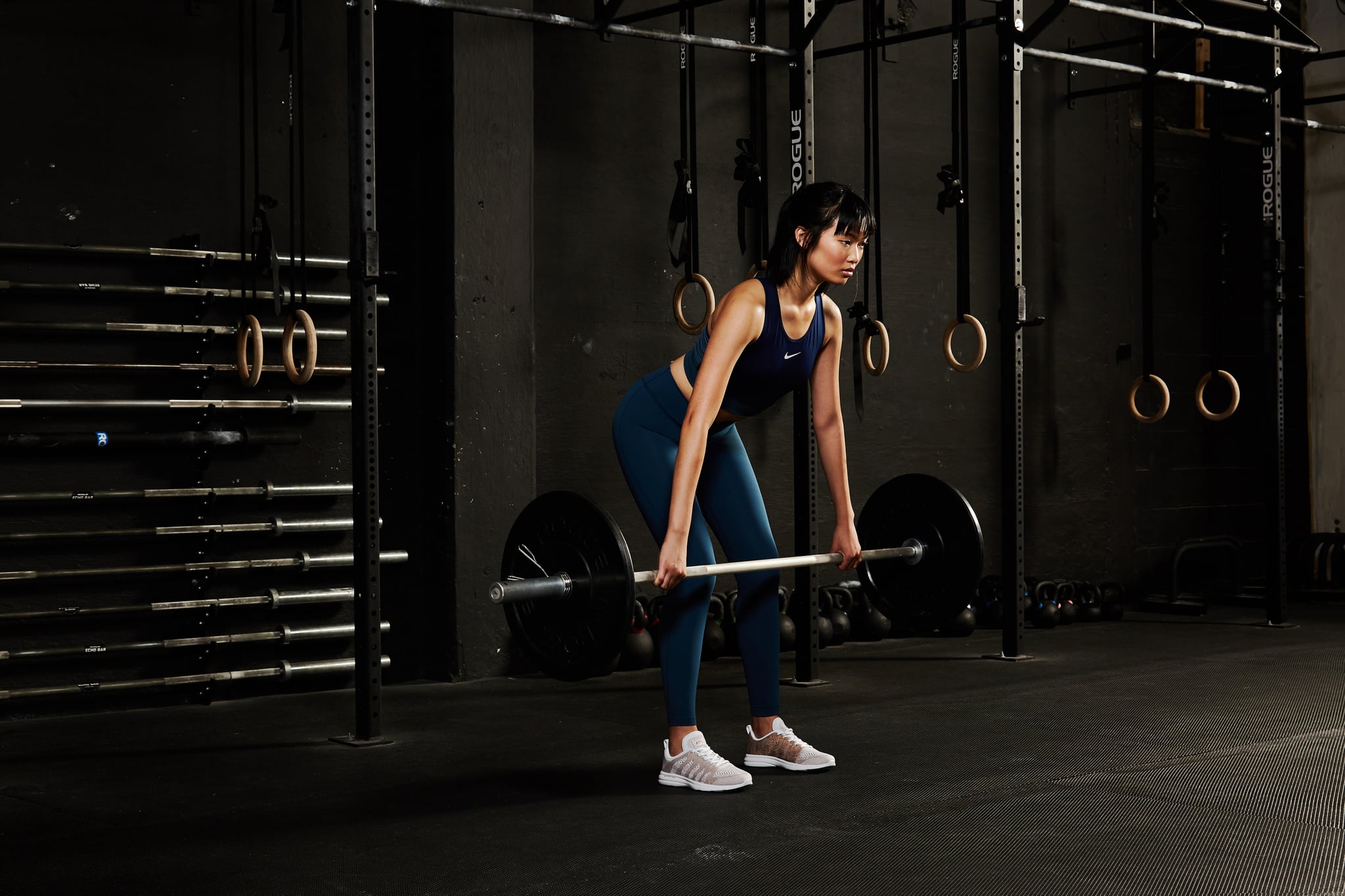How Much Weight Should I Lift?
Not Sure How Heavy to Lift? Follow This Trainer's Simple Advice

Finding the perfect amount of weight to lift during your strength sessions can often feel like a personal version of Goldilocks and the Three Bears. Opting for weights that are too light won't transform your body much, and choosing weights that are too heavy will put you at risk for injury. Finding that just-right weight may take some time upfront, but doing so will allow you to get the most out of your workouts and create the results you're looking for.
How to Know You're Lifting Too Heavy
Before ever touching a weight, I always advise clients and friends to master movements with just their bodyweight. Before jumping into a 175-pound barbell back squat you should be able to perform a perfect air squat. Once you've mastered that move, begin to add weight. Regardless of how much weight you add, the goal is to be able to execute a squat with proper mechanics.
A sign you're lifting too heavy is being unable to perform a squat with good mechanics, which is sitting back with your weight in your heels, maintaining a flat back, and your thighs parallel to the floor. Another physical sign that the weight is likely too heavy is straining. We've all seen a person in the gym trying to lift a heavy weight turn red as a tomato from lack of breathing. While weightlifting shouldn't feel relaxing, it also shouldn't make you feel like you're about to pass out or pull a muscle.
How to Lift For Muscular Endurance and Stability
If you're new to weightlifting, you should begin in the endurance and stabilization phase. The focus of this phase is increasing stability, muscular endurance, and improving muscular coordination. The rep and set range for this phase will be: one to three sets of 12 to 20 reps at 50 to 70 percent of your one-rep max. Your one-rep max is the heaviest you can lift with proper form for a given exercise. If your one-rep max for dumbbell squats is 75 pounds, you should be lifting between 37.5 and 52.5 pounds. In this phase, your rest should be zero and 90 seconds between sets.
How to Lift For Hypertrophy (Muscle Growth)
If you're looking to burn fat and build muscle, I suggest training in this phase a majority of the time. In this phase your program should consist of high volume (heavy weight) and minimal rest periods to cause cellular changes to increase the size of your muscle. The rep and set range will be: three to five sets of six to 12 reps at 75 to 85 percent of your one-rep max. If your one-rep max for barbell back squats is 100 pounds, you should be lifting anywhere between 75 and 85 pounds. The rest period between sets in this phase is anywhere from zero to 60 seconds.
How to Lift For Maximal Strength
Training for maximal strength is exactly what it sounds like — you want to get strong, strong, strong. The focus in this phase is increasing the load placed on the tissues of the body and improving the rate of force production. To train for maximal strength, your rep and set range will be: four to six sets of one to five reps at 85 to 100 percent of your one-rep max. Using the same barbell squat example from above, you should be lifting anywhere between 85 and 100 pounds in this phase. Your rest period will be between three and five minutes.








